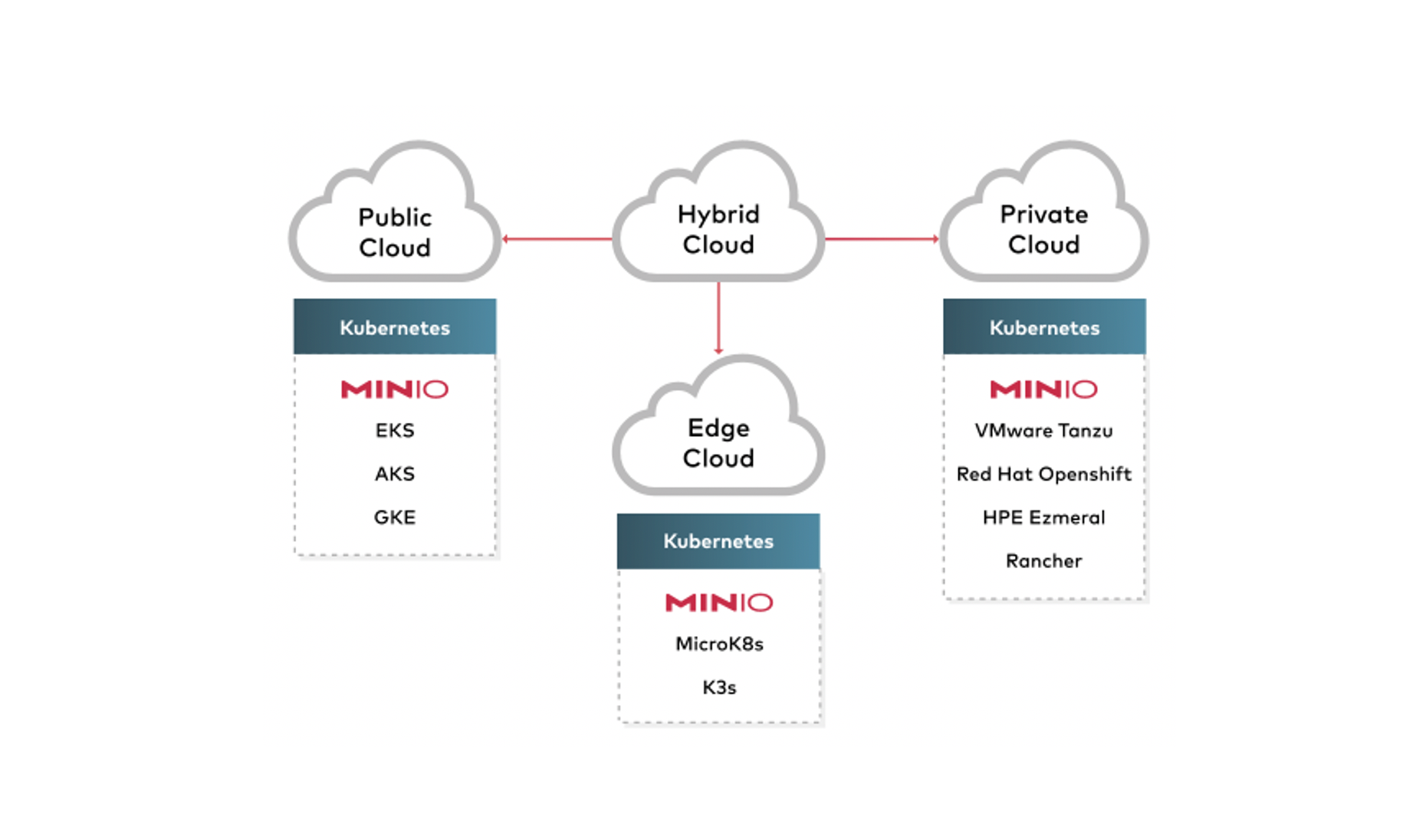Why MinIO Wins the Hybrid Cloud

We just wrapped Storage Field Day 2021 and during our session we generated a particular amount of interest around our hybrid strategy. At the end, we were a little compressed on time, but the message resonated and was the primary subject of the breakout room discussion with the delegates after the cameras stopped rolling.
To say the hybrid cloud is hot would be like calling the sun a mere warming oven. It is the subject of a multimillion dollar ad campaign from Big Blue and was a focal point of Re:Invent. The second point is of particular note given that Amazon didn’t even acknowledge the existence of other public clouds or the private cloud until just recently.
Given the private cloud is growing at a slightly faster rate than the public cloud - this narrative was no longer credible and thus AWS did what it does best - listened to its customers and started to talk more about the hybrid cloud.
What followed was the introduction of Outposts by AWS, Anthos by GCP and Stack by Azure. With these new “on-prem” options they claimed to be ready for the hybrid cloud.
Not So Fast
The thing is that the hybrid cloud is much more than your public cloud and an onprem/private cloud offering.
The hybrid cloud is your public cloud, your competitors public cloud, the private cloud, private cloud Kubernetes platforms (VMware, Openshift, Ezmeral) and the edge.
To win the public cloud you have to be everywhere. Kubernetes is the facilitator for that ambition - both at MinIO and at AWS/GCP/Azure but there are other elements at play.
Here is our argument for why we win the race for the hybrid cloud:
In the Public Cloud
MinIO has more than 7.7M IPs across AWS, GCP and Azure today. We are not there because of some great push into those marketplaces - indeed we are not even in GCP or AWS’s marketplace. We are there because developers carried us there. They valued our simplicity, our performance, our ability to run wherever they wanted us to - and so they run us in the cloud, often directly on top of AWS S3.
7.7M IPs is not an anomaly. It’s evidence. Evidence of enterprises executing an articulate, hybrid cloud strategy.
It’s not just the big three - OVH, Hertnzer, Alibaba, Tencent, Jio, Digital Ocean - the list is a veritable longtail case study representing another 10M+ more instances of MinIO.
While we cannot prove it, we suspect our 7.7M IPs in the public cloud is more than Outpost, Anthos and Stack have combined in the private cloud.
A final point here. To reach anywhere near the scale we have, AWS will need to be successful in GCP and Azure. GCP will need to do the same in Azure and AWS. Azure in GCP and AWS. There is no evidence to suggest they will be successful in that effort.
Outside the Public Cloud
The hybrid cloud is also about the new Kubernetes platforms. VMware Tanzu is primary among them but you also have HPE Ezmeral, Red Hat OpenShift and SUSE Rancher. MinIO is on the first two and will be on the next two shortly. We want to be in every major distribution - and given we are software defined and Kubernetes-native, that shouldn’t be a problem.
On the other hand, how does an Outpost Rack work in the VMware Tanzu construct? It doesn’t. It is antithetical to the model.
At the Edge
The hybrid cloud is also about the edge. At 50MB, MinIO can run in a car, a 5G POP, on an ARM chip (think Raspberry Pi). How does an Outpost Rack make it there? Again, it doesn’t.
Part of the challenge for the big three is that they are built to run a service - and not built to enable someone else’s infrastructure. This puts them at a material disadvantage in the hybrid cloud game. That is why they are struggling to be relevant outside of their own cloud.
Simple Logic
MinIO wins the hybrid cloud because, in four of the five key environments (your public cloud, other public clouds, private cloud, private cloud Kubernetes platforms, edge), we offer a better product with significant traction.
Our hybrid cloud strategy doesn’t require us to be better than AWS on AWS. It requires us to be better than AWS everywhere outside of AWS.
If we do this, enterprises will adopt us as their default storage choice for the hybrid cloud.
The same goes for Azure and GCP.
This isn’t just achievable. It is what is happening and we have evidence of that.
That’s why MinIO wins the hybrid cloud.
Let’s be clear, we are in the early days. MinIO is not under any illusion that these giants don’t present formidable competitors. But we like the way our board is set up. Our founders are big chess players. To AWS, GCP and Azure we say “check.”
Doing is Believing
Don’t take our word for it. See for yourself. Download the code, run it in AWS, onprem, in VMware or on in an edge storage environment. Join our Slack channel or engage an expert.
The hybrid cloud is the future and it is here now.






